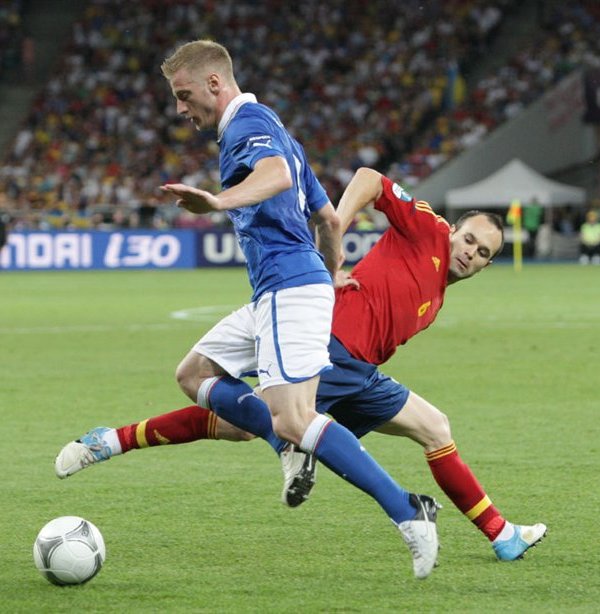Midfielders are the work horses of the soccer world. They cover the most ground of any players and are simultaneously the most varied and versatile. There are lost of ways to play midfield and lots of types of people who play it but there are some things they all have in common. Midfielders must be able to run for 90 minutes. They must be responsible and have good judgement because no matter how promising an opportunity to attack looks, it is their responsibility to get back on defense when the opposing team counter attacks. Midfielders are fanatic about possession — both keeping it when their team has the ball and getting it back when the ball is lost to the opposition. Midfielders have the best sense of where they are on the field. This may sound simple, but no other position requires a player to roam the untethered area in the center of the field as much as a midfielder, and knowing, without effort, where you are, is harder than it seems. Playing in the middle of the field also demands great creativity. Every choice a midfielder makes is an unbounded one — they can run or pass back, forward, left, or right. The soccer world is an oyster to a midfielder but it’s a punishing oyster, to be sure.
Soccer people sometimes use numbers to refer to positions. Of the following types of midfielders, the central attacking midfielders are called 10s and the central defensive midfielders are called 6s.
Central attacking midfielder
If you were starting a dream soccer team, you would want your best player to be a central attacking midfielder. Playing just behind the strikers, this position provides the greatest opportunity for creative brilliance. As opposed to a striker, a central attacking midfielder is not beholden to anyone for anything. If they want the ball, they can drop farther back and get it easily from a defender. If the strikers on their team are not scoring, a central attacking midfielder should be able to pick up the slack themselves. They are wonderful dribblers, productive scorers, and the best passers in the world. Playing this position may not seem like the most physically demanding position — they don’t bear the defensive responsibilities of other midfielders — but don’t let that fool you, it’s still tough. Great central attacking midfielders take more physical abuse than any other players on the field. Defenders mark them carefully and would often rather hack them down with an early trip than let them pick up a head of steam.
Central defensive or holding midfielders
The central defensive midfielder or holding midfielder is often the toughest player on the team. Asked to take part in a team’s offense while also tracking back and tackling the opponent’s attacking midfielder — often the other team’s best player — a defensive midfielder has her hands full. Defensive midfielders are sure tacklers and tireless workers who pursue the ball fanatically. Defensive midfield is such a taxing job that only the very best are able to do everything it requires equally well. Most people in this position either specialize in the defensive aspects of the position and play a lot like a defender or lean more towards offensive soccer. A good offensive player put in this position will still “hold back” as the position requires but love to jump start the offense with highly technical long passes. From their deep position, holding midfielders can see the entire field and have a great opportunity to anticipate movement and provide service to an attacking player right where she needs it.
Left or right midfielders
Midfielders who play on the side of the field are hard working players who don’t often get the appreciation that their central midfielder teammates do. As opposed to central midfielders, who have one or two players in front and behind them (a defensive midfielder plays in front of a defender and behind a central attacking midfielder and a striker — an attacking midfielder plays behind a striker and in front of a defender and an attacking midfielder) a left or right midfielder is often one of only two people up and down their part of the field. Unless they are directly supporting a winger on offense, an outside midfielder is the most forward player on their side of the field. This doesn’t take away any of their defensive responsibility. Getting caught too far forward can mean leaving the defender on that side of the field outnumbered two or three to one — a hopeless position. The saving grace for an outside midfielder is the salvation of the sideline. Since their responsibility is primarily up and down that line, they learn to think about soccer from the sideline in, knowing nothing bad can happen beyond them to the outside.

